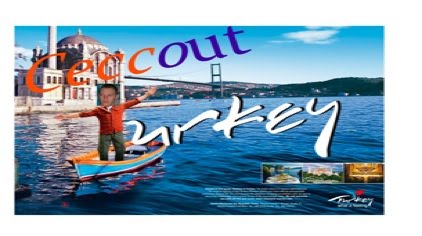Following a close second, are places that lack real roads.
When you put the two together, stir, and cook over charcoal with a tomato on top, you get the village of Old Red Apple.
Accessible only by enrolling in Rural Sociology (or by dirt road), this village is located high in the mountains near Bursa. It's remote enough that the driver got lost three times (because he took directions from other Turks), yet modern enough that the school has a computer- with internet.
The Old Red Apple is home to about 500 villagers. It gets its name from the apple trees that used to grow there, until poor land use resulted in an extinction of apple trees from that area. On the bright side, if they ever wanted to make it into a condo development, the name is already chosen for them. You'd be hard pressed to find young professionals and retirees who would pass up the opportunity to gaze for hours at the non apple orchards and dine on non-existent apples throughout the year.
In addition to myopic land use, the village has been hit even harder by the International Monetary Fund's structural adjustment policies, which, in the most simple terms, puts villagers out of work. As such, the income generation has shifted from agricultural to seasonal labour.
Hm. Maybe I was paying attention in class.
So to arrive with enough time for the students to conduct interviews, we left Eskisehir at around 6:30 in the morning. Since the is about 3.5 hours from our departure point, it seemed as though we'd arrive at around 10 in the morning. But, traveling in true Turkish form, we were required to make many tea stops. Turks can't seem to go more than an hour or so without tea, so we stopped more than a few times. While they drink copious amounts of the stuff, they have an amazing ability to not have to pee all the time. I wish I could say the same.
After some tea stops, we also took a couple of hours at a lake resort (Gol Yazi). I thought that the resort was the village when we first got there, and then figured that the prof had been blowing everything out of proportion- would a village with only 500 people have a Go-Kart track? Didn't think so.
It was in Gol Yazi that I met the closest thing to Leyland Cecco I've ever seen. It's a bird that lives on the water, and it's called Leylek Ciconia Ciconia. Creepy.
The site of buses pulling themselves up the mountain and into village brought all the residents out of their homes and into the streets. Children came out of out of the school and stared as though they'd never seen an outsider before. Then one of the children's phone rang, and he had a Kanye West ringtone. Hearing 'Stronger' immediately shattered my idealized notion of this pure and untouched village.
In reality, virtually every person has satellite TV. Which is more than I can say about my current situation...
The men work as farmers to produce for the village only- structural adjustment policies have made it useless for them to sell to the government. During the summer, they work as seasonal labourers at the archeological sites a few kilometres away. The women are unpaid household labourers, but the Turkish government considers them employed (although they receive no pay), thus inflating employment numbers.
As per the norm in Turkish culture, the villagers were outrageously hospitable- tea and fresh baked bread was brought out, and all were eager to give tours to the sociology students.
When they heard I was from Canada, some gave me blank stares, others (the lumberjacks) silent nods that said "Yes, my brother, we know of the fine trees that grow in your faraway land." Or something like that.
The village was a beautiful place- houses made of a random assortment of boards stood next to brick buildings, and the vivid colours seemed more Caribbean than rural Turkish. And cows drank from the fountains in the village square- always a treat to see.
The village was a nice departure from all things touristy. Evidence of such these activities can be found at:
http://www.flickr.com/photos/lcecco/
